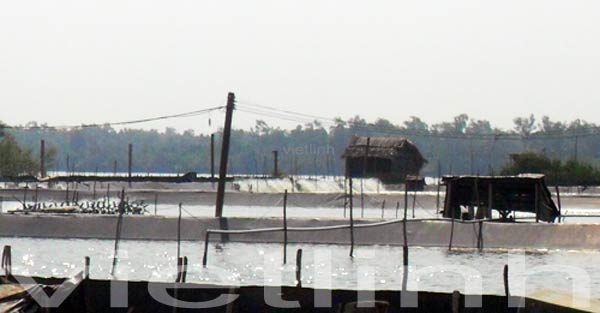Biofloc and semi-biofloc technology:
Biofloc technology was researched and developed in the 70s - 90s of the 20th century for shrimp and fish farming. After initial applications, biofloc is now widely applied on a large scale in many countries.
In farming pond environment, there is always the presence of heterotrophic bacteria. These bacteria have the ability to assimilate organic waste and turn into biomass of bacteria. If they are kept in farming water and reach a certain density, these bacteria will stick together into small particles, called flocs. Besides heterotrophic bacteria, flocs include many other organisms such as fungi, algae, and zooplankton.
Microbial flocs have high nutritional values and can be used as feed for shrimp and fish. Biofloc technology facilitates the growth of heterotrophic bacteria by adding carbon to the pond environment to balance the available N (nitrogen) content. The technology also maintains the level of water stirring in farming pond and keeps the appropriate content of dissolved oxygen.
To successfully apply biofloc technology, according to Viet Linh, farmers need to comply to many requirements such as stocking shrimp in high density, maintaining a proper aeration and stirring system, adjusting the C:N (carbon-to-nitrogen) ratio correctly, managing a strict pond control system.
Many shrimp farmers have turned to a simpler biofloc technology, called semi-biofloc. Semi-biofloc is a hybrid system that combines autotrophic and heterotrophic organisms.
The management of semi-biofloc shrimp farming systems requires complex technical knowledge to ensure the system operates effectively with high productivity.

Using biofloc and semi-biofloc technology, according to Viet Linh, farmers should note the following tips:
1. Farmers must have experience in shrimp farming and receive basic instructions on biofloc technology. Shrimp farm must have a suitable design and area for shrimp ponds or tanks, along with good financial resources. A farming technician should be on 24-hour duty.
2. Ensure the supply of electricity for ponds or tanks 24/7.
3. Have a separate water supply and drainage system. Have a settling pond. Actively supply water to farming ponds when needed.
4. Use probiotics during the farming process. Probiotics should have 2 or more strains and must have Bacillus sp.
5. Good control of flocs and water quality during the farming period. Aerators must be operated continuously. Pond bottom should be equipped with a siphon system.
6. Shrimp should be reared in 2 stages: Nursing shrimp in about 30 days, and then transferring shrimp to farming ponds. Both phases are carried out according to the biofloc/semi-biofloc procedure.
© 2019 Viet Linh
- Preparing and using EM2 to manage pond water
- Some experiences in selecting shrimp post-larvae
- The functions of probiotics and the use of probiotics in shrimp farming
- Using Effective Microorganisms (EM) and garlic to prevent diseases in shrimp
- Tags: biofloc; semi-biofloc; bacteria; probiotics; shrimp; shrimp farming; C:N